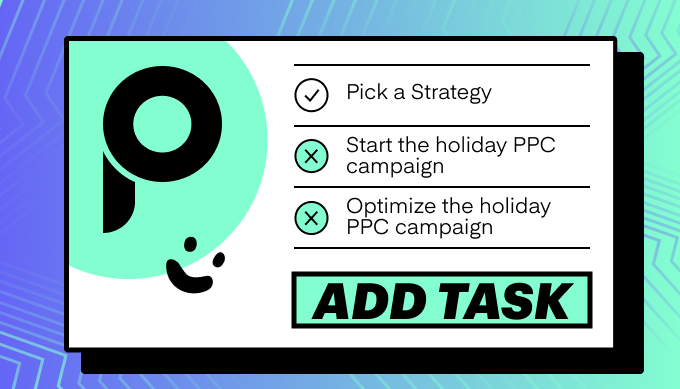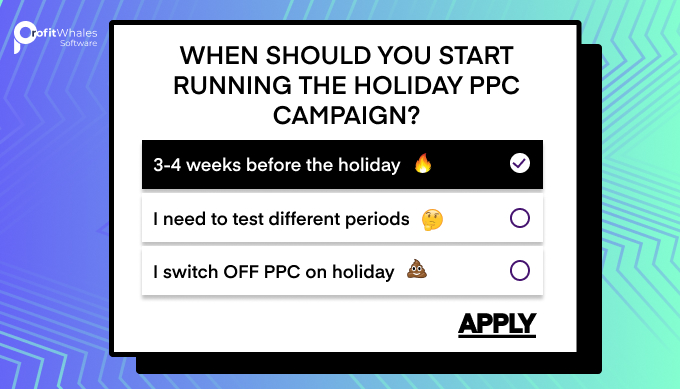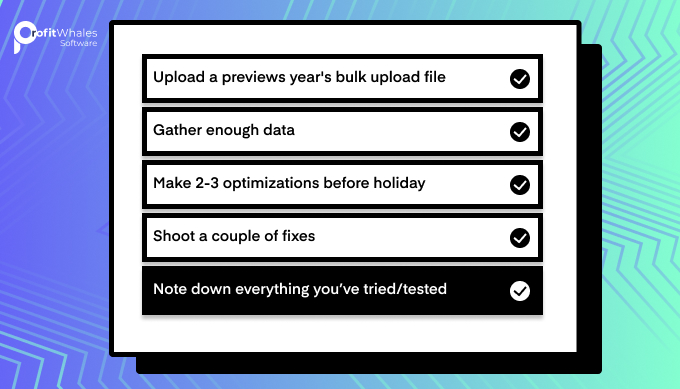
Greetings, fellow Amazonians. I’d like to share a few tips with you on how we prepare and run the PPC campaigns for holiday (or any short season) products on Amazon.com
The first thing to remember is that most holiday products are just a variation of an everyday product (and mostly in exterior).
For instance, if you’re selling hard plastic cups with golden imprint, switching to Halloween or X-Mas cups would effectively mean changing the print pattern.
On the marketing side, this means that (if you have already been selling a regular version of the product,) you probably have some idea of what kind of marketing strategy fits it on Amazon.com. If this is the case, all you need now is to give it a little boost and be ready to hit the ground running just before the holiday sales galore begins.
Whenever preparing your product listing and PPC for an upcoming holiday sale, first things first:
Table of Contents
ToggleFind the relevant Amazon keywords to your product

These will be used both for the product listing and the Sponsored PPC Campaign. If you already have a regular version of the product which you’re selling all year long, most of the work is already done. You already have a set of relevant keywords which people look for this product on Amazon on a day to day basis. You can safely take the best performing keywords from this old PPC campaign – and add to your holiday campaign, with some additions.
By “additions”, I mean adding some extra keywords that relate to that particular holiday. For instance, if you’re selling home slippers, and you want to sell an X-mas version (in green, red and white, or with a reindeer or an X-mas tree embroidery) — turn your regular keywords like “home slippers”, to “Christmas slippers”, “gift slippers”, or “winter home gift” even. I suggest setting them into phrase match type too, if there is no historically proven threat of receiving completely random clicks from irrelevant searches, of course.
When looking for correct “themed” search terms and keywords, you may not have sufficient data at the start of your first PPC campaign: the currently popular keywords are NOT accounting for the specific keywords that are used in the upcoming holiday. Thus, you will have to rely more heavily (at least in your first attempts) on common sense when researching these keywords.
Try finding a few competing holiday products (if there are any) to salvage their listing for some ideas. Data from Google (both search console and Ads Keywords Planner are good free tools) can also prove helpful. Just don’t forget to screen out all but sales-related search terms. Google is an information platform after all, not a marketplace.
Alternatively, you could use ProfitWhales, an Amazon PPC agency.
The keywords are in, and now it’s time for an Amazon PPC Strategy

Now, let us assume you’ve gathered enough keywords and are ready to use them.
It’s time to pick a strategy.
Strategy helps to focus efforts and resources (including the budget). And this is especially important for PPC campaigns when there will be not much room to maneuver, as the sales season is short.
There are 3 strategies that can be used to leverage holiday sales:
1 – Selling the same (a regular) product, but with holiday-related PPC campaign
This is probably the easiest strategy to implement. All you need here is to launch an additional PPC campaign (usually Sponsored Products). It targets keywords from all the above mentioned “holiday occasion” combo. It also targets holiday focused ASINs, both weaker competitive products and stronger complementary products (if you know of any).
2 – Temporarily switch all marketing efforts to the holiday product
This strategy is a radical one, and it can benefit non-PL products that are known for having a many-fold increase in sales over the holidays. This strategy also probably means that you have a limited PPC budget, and you want to focus all of it on the advertising that will bring you the most sales.
To implement it, you need to use the already existing regular PPC campaigns, plus the holiday-specific campaign. And set a new advertised ASIN (the holiday version of your product) for all of them.
Now, bear in mind that swapping one ASIN for another in a running campaign is NOT the best solution. Instead you should try and:
- A – Make a full duplicate of your existing PPC campaign
- B – Add holiday targeting options: keywords and competing/complementary ASINs to it
- С – Set the product ASIN to the holiday version of your product
- D – Pause old PPC campaigns (ones that promoted the regular version of the product) until the holiday is over
3 – Adding a special holiday version and selling it in parallel to regular product
This strategy is the most expensive one. However, on a number of occasions we have seen it generating the best results in the long run.
To implement it, you effectively perform Strategy 2, but you don’t cut out advertising to the regular product PPC campaigns either. And you do not include the non-holiday keywords into holiday PPC campaigns–because your regular product’s PPC is kicking.
Additionally, you should put a link to the holiday-version of the product into your regular listing, so customers can quickly find it.
Maintaining running PPC ads for a product is always the best strategy with the Amazon.com search algorithms. Effectively, the more consistent sales you keep (including ads-stimulated), the more favorably the algorithm looks at your product. So, keeping your sales trickling at all times is always a more desirable approach for keeping a warm spot on the Amazon.com search results.
When should you start running the holiday PPC campaign?

My team’s experience correlates strongly to the way most PPC experts describe the time it currently takes Amazon’s algorithm to adapt the changes in a product’s sales: 3-4 weeks. And pretty much regardless of how you achieve it, the increase in sales should kick in and remain consistent over 3-4 weeks before Amazon’s A10 algorithm fully settles with your new search result position.
What does this mean for implementing our holiday PPC strategies?
Basically, we should launch the holiday PPC campaign no sooner than 4 weeks before the actual sales begin. And bear in mind that sometimes the period PRIOR to the holiday (like the X-mas) can stretch out for months ahead. It certainly would not be smart to miss out on this opportunity to sell more AND to test how that holiday PPC setup works (and maybe jury rig a few fixes).
Out of season demand
A PPC campaign is definitely worth launching 4 weeks before the sales begin. But you can also leave the holiday product PPC running for the entire year, while keeping a small stock on amazon FBA.
But why? Isn’t this kind of a waste of money?
Well, it rarely is. For instance, there are few (if any) competitors who leave their holiday ads running outside of the holiday. Meaning, that on those few occasions when a smart customer WILL be looking for a Halloween outfit in May, you’re likely to be on the top of search for her with your Halloween party masks (or whatever you sell).
And you will get few (if any) clicks from people who do not intend to buy because they really won’t be looking for such a product out of season in the first place.
Optimizing a running holiday PPC campaign

To put it short, it’s a bit like aiming the arrow in mid-flight. You will have little time to react. This is what really sets holiday sales apart from any other sales on Amazon.com: short time and intensity of trade.
By the time your PPC campaign has been running 4 weeks, you will have gathered enough data for 2-3 optimization runs, if you’re lucky.
When the actual holiday sales start, you usually will not have enough time to test and try bids to optimise to achieve an ideal ACoS/ sales volume balance. Maybe a couple of fixes. So, in a broad sense, you will have to make do with what you’ve started.
This makes experience invaluable when it comes to repeating the same trick next year. So, make sure you save the holiday PPC campaign setup (e.g. in a bulk upload file) with all the keywords and bids that proved working well.
A little personal advice: note down everything you’ve tried and especially what has worked.
Write down somewhere what strategy you were pursuing, what changes, why you made the campaigns and if they had any effect.
Bookkeeping this seasonal knowledge will let you leverage it in a year’s time, when all the details have faded from the managers’ memory.
That’s all I have to say about preparing the holiday sales PPC right now.
Thank you for making it to the end. Please feel free to share your comments or ask me questions below. I am proud to present to you my experience and first-hand knowledge.
As always, I wish all fellow amazonians good hunting out there!
Ihor Dubovetskyi
Co-founder, Profit Whales
Ihor Dubovetskyi is the co-founder of Profit Whales, the accelerator for Brands selling on Amazon based on advanced decision-making technologies using Big Data & Data Science. Ihor is obsessed with scaling brands beyond their expectations and building tools that will help Brands on Amazon to scale faster more efficiently.



